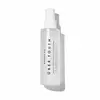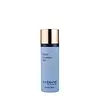What's inside
What's inside
 Key Ingredients
Key Ingredients

 Benefits
Benefits

 Concerns
Concerns

 Ingredients Side-by-side
Ingredients Side-by-side

Water
Skin ConditioningNiacinamide
SmoothingButylene Glycol
HumectantPropanediol
SolventGlycerin
HumectantPEG-40 Hydrogenated Castor Oil
EmulsifyingPhenoxyethanol
PreservativePEG-240/Hdi Copolymer Bis-Decyltetradeceth-20 Ether
StabilisingSorbitan Laurate
EmulsifyingParfum
MaskingEthylhexylglycerin
Skin ConditioningCitric Acid
BufferingTocopherol
AntioxidantTetrasodium Glutamate Diacetate
Hydroxyethylcellulose
Emulsion StabilisingAcetyl Dipeptide-1 Cetyl Ester
Skin ConditioningLimonene
PerfumingChondrus Crispus Extract
Skin ConditioningBenzyl Salicylate
PerfumingHexyl Cinnamal
PerfumingKigelia Africana Fruit Extract
Skin ConditioningBenzyl Alcohol
PerfumingLithothamnion Calcareum Extract
Skin ConditioningSodium Hydroxide
BufferingPotassium Laurate
EmulsifyingDehydroacetic Acid
PreservativeWater, Niacinamide, Butylene Glycol, Propanediol, Glycerin, PEG-40 Hydrogenated Castor Oil, Phenoxyethanol, PEG-240/Hdi Copolymer Bis-Decyltetradeceth-20 Ether, Sorbitan Laurate, Parfum, Ethylhexylglycerin, Citric Acid, Tocopherol, Tetrasodium Glutamate Diacetate, Hydroxyethylcellulose, Acetyl Dipeptide-1 Cetyl Ester, Limonene, Chondrus Crispus Extract, Benzyl Salicylate, Hexyl Cinnamal, Kigelia Africana Fruit Extract, Benzyl Alcohol, Lithothamnion Calcareum Extract, Sodium Hydroxide, Potassium Laurate, Dehydroacetic Acid
Water
Skin ConditioningCopaifera Officinalis Resin
MaskingGlycerin
HumectantButylene Glycol
HumectantPropanediol
SolventPolyglyceryl-3 Distearate
EmulsifyingIsosorbide Dicaprylate
Skin ConditioningCetearyl Glucoside
EmulsifyingEthoxydiglycol
HumectantDiheptyl Succinate
EmollientSqualane
EmollientNiacinamide
SmoothingPanax Notoginseng Root Extract
HumectantTheobroma Cacao Leaf Cell Extract
MaskingChamomilla Recutita Flower Extract
MaskingMagnolia Officinalis Bark Extract
AntimicrobialEchinacea Purpurea Extract
MoisturisingSophora Japonica Bud Extract
Skin ProtectingHumulus Lupulus Extract
AntimicrobialCurcuma Longa Root Extract
MaskingHydrolyzed Sodium Hyaluronate
Skin ConditioningHaematococcus Pluvialis Extract
AntioxidantAstaxanthin
Skin ConditioningErgothioneine
AntioxidantThioctic Acid
AntioxidantSorbitan Olivate
EmulsifyingTocopherol
AntioxidantCaprylic/Capric Triglyceride
MaskingCapryloyl Glycerin/Sebacic Acid Copolymer
Skin ConditioningSodium Stearoyl Glutamate
CleansingPentaerythrityl Tetra-Di-T-Butyl Hydroxyhydrocinnamate
AntioxidantGlyceryl Stearate Citrate
EmollientTribehenin
EmollientCetearyl Alcohol
EmollientAcacia Senegal Gum
MaskingHydroxyethylcellulose
Emulsion StabilisingXanthan Gum
EmulsifyingEthylhexylglycerin
Skin ConditioningPhenethyl Alcohol
MaskingPhenoxyethanol
PreservativeCitric Acid
BufferingPhytic Acid
Sodium Hydroxide
BufferingWater, Copaifera Officinalis Resin, Glycerin, Butylene Glycol, Propanediol, Polyglyceryl-3 Distearate, Isosorbide Dicaprylate, Cetearyl Glucoside, Ethoxydiglycol, Diheptyl Succinate, Squalane, Niacinamide, Panax Notoginseng Root Extract, Theobroma Cacao Leaf Cell Extract, Chamomilla Recutita Flower Extract, Magnolia Officinalis Bark Extract, Echinacea Purpurea Extract, Sophora Japonica Bud Extract, Humulus Lupulus Extract, Curcuma Longa Root Extract, Hydrolyzed Sodium Hyaluronate, Haematococcus Pluvialis Extract, Astaxanthin, Ergothioneine, Thioctic Acid, Sorbitan Olivate, Tocopherol, Caprylic/Capric Triglyceride, Capryloyl Glycerin/Sebacic Acid Copolymer, Sodium Stearoyl Glutamate, Pentaerythrityl Tetra-Di-T-Butyl Hydroxyhydrocinnamate, Glyceryl Stearate Citrate, Tribehenin, Cetearyl Alcohol, Acacia Senegal Gum, Hydroxyethylcellulose, Xanthan Gum, Ethylhexylglycerin, Phenethyl Alcohol, Phenoxyethanol, Citric Acid, Phytic Acid, Sodium Hydroxide
Ingredients Explained
These ingredients are found in both products.
Ingredients higher up in an ingredient list are typically present in a larger amount.
Butylene Glycol (or BG) is used within cosmetic products for a few different reasons:
Overall, Butylene Glycol is a safe and well-rounded ingredient that works well with other ingredients.
Though this ingredient works well with most skin types, some people with sensitive skin may experience a reaction such as allergic rashes, closed comedones, or itchiness.
Learn more about Butylene GlycolCitric Acid is an alpha hydroxy acid (AHA) naturally found in citrus fruits like oranges, lemons, and limes.
Like other AHAs, citric acid can exfoliate skin by breaking down the bonds that hold dead skin cells together. This helps reveal smoother and brighter skin underneath.
However, this exfoliating effect only happens at high concentrations (20%) which can be hard to find in cosmetic products.
Due to this, citric acid is usually included in small amounts as a pH adjuster. This helps keep products slightly more acidic and compatible with skin's natural pH.
In skincare formulas, citric acid can:
While it can provide some skin benefits, research shows lactic acid and glycolic acid are generally more effective and less irritating exfoliants.
Most citric acid used in skincare today is made by fermenting sugars (usually from molasses). This synthetic version is identical to the natural citrus form but easier to stabilize and use in formulations.
Read more about some other popular AHA's here:
Learn more about Citric AcidEthylhexylglycerin (we can't pronounce this either) is commonly used as a preservative and skin softener. It is derived from glyceryl.
You might see Ethylhexylglycerin often paired with other preservatives such as phenoxyethanol. Ethylhexylglycerin has been found to increase the effectiveness of these other preservatives.
Glycerin is already naturally found in your skin. It helps moisturize and protect your skin.
A study from 2016 found glycerin to be more effective as a humectant than AHAs and hyaluronic acid.
As a humectant, it helps the skin stay hydrated by pulling moisture to your skin. The low molecular weight of glycerin allows it to pull moisture into the deeper layers of your skin.
Hydrated skin improves your skin barrier; Your skin barrier helps protect against irritants and bacteria.
Glycerin has also been found to have antimicrobial and antiviral properties. Due to these properties, glycerin is often used in wound and burn treatments.
In cosmetics, glycerin is usually derived from plants such as soybean or palm. However, it can also be sourced from animals, such as tallow or animal fat.
This ingredient is organic, colorless, odorless, and non-toxic.
Glycerin is the name for this ingredient in American English. British English uses Glycerol/Glycerine.
Learn more about GlycerinHydroxyethylcellulose is used to improve the texture of products. It is created from a chemical reaction involving ethylene oxide and alkali-cellulose. Cellulose is a sugar found in plant cell walls and help give plants structure.
This ingredient helps stabilize products by preventing ingredients from separating. It can also help thicken the texture of a product.
This ingredient can also be found in pill medicines to help our bodies digest other ingredients.
Learn more about HydroxyethylcelluloseNiacinamide is a multitasking form of vitamin B3 that strengthens the skin barrier, reduces pores and dark spots, regulates oil, and improves signs of aging.
And the best part? It's gentle and well-tolerated by most skin types, including sensitive and reactive skin.
You might have heard of "niacin flush", or the reddening of skin that causes itchiness. Niacinamide has not been found to cause this.
In very rare cases, some individuals may not be able to tolerate niacinamide at all or experience an allergic reaction to it.
If you are experiencing flaking, irritation, and dryness with this ingredient, be sure to double check all your products as this ingredient can be found in all categories of skincare.
When incorporating niacinamide into your routine, look out for concentration amounts. Typically, 5% niacinamide provides benefits such as fading dark spots. However, if you have sensitive skin, it is better to begin with a smaller concentration.
When you apply niacinamide to your skin, your body converts it into nicotinamide adenine dinucleotide (NAD). NAD is an essential coenzyme that is already found in your cells as "fuel" and powers countless biological processes.
In your skin, NAD helps repair cell damage, produce new healthy cells, support collagen production, strengthen the skin barrier, and fight environmental stressors (like UV and pollution).
Our natural NAD levels start to decline with age, leading to slower skin repair, visible aging, and a weaker skin barrier. By providing your skin niacinamide, you're recharging your skin's NAD levels. This leads to stronger, healthier, and younger looking skin.
Another name for vitamin B3 is nicotinamide. This vitamin is water-soluble and our bodies don't store it. We obtain Vitamin B3 from either food or skincare. Meat, fish, wheat, yeast, and leafy greens contain vitamin B3.
The type of niacinamide used in skincare is synthetically created.
Learn more about NiacinamidePhenoxyethanol is a preservative that has germicide, antimicrobial, and aromatic properties. Studies show that phenoxyethanol can prevent microbial growth. By itself, it has a scent that is similar to that of a rose.
It's often used in formulations along with Caprylyl Glycol to preserve the shelf life of products.
Propanediol is an all-star ingredient. It softens, hydrates, and smooths the skin.
It’s often used to:
Propanediol is not likely to cause sensitivity and considered safe to use. It is derived from corn or petroleum with a clear color and no scent.
Learn more about PropanediolSodium Hydroxide is also known as lye or caustic soda. It is used to adjust the pH of products; many ingredients require a specific pH to be effective.
In small amounts, sodium hydroxide is considered safe to use. However, large amounts may cause chemical burns due to its high alkaline.
Your skin has a natural pH and acid mantle. This acid mantle helps prevent harmful bacteria from breaking through. The acid mantle also helps keep your skin hydrated.
"Alkaline" refers to a high pH level. A low pH level would be considered acidic.
Learn more about Sodium HydroxideTocopherol (also known as Vitamin E) is a common antioxidant used to help protect the skin from free-radicals and strengthen the skin barrier. It's also fat soluble - this means our skin is great at absorbing it.
Vitamin E also helps keep your natural skin lipids healthy. Your lipid skin barrier naturally consists of lipids, ceramides, and fatty acids. Vitamin E offers extra protection for your skin’s lipid barrier, keeping your skin healthy and nourished.
Another benefit is a bit of UV protection. Vitamin E helps reduce the damage caused by UVB rays. (It should not replace your sunscreen). Combining it with Vitamin C can decrease sunburned cells and hyperpigmentation after UV exposure.
You might have noticed Vitamin E + C often paired together. This is because it is great at stabilizing Vitamin C. Using the two together helps increase the effectiveness of both ingredients.
There are often claims that Vitamin E can reduce/prevent scarring, but these claims haven't been confirmed by scientific research.
Learn more about TocopherolWater. It's the most common cosmetic ingredient of all. You'll usually see it at the top of ingredient lists, meaning that it makes up the largest part of the product.
So why is it so popular? Water most often acts as a solvent - this means that it helps dissolve other ingredients into the formulation.
You'll also recognize water as that liquid we all need to stay alive. If you see this, drink a glass of water. Stay hydrated!
Learn more about Water